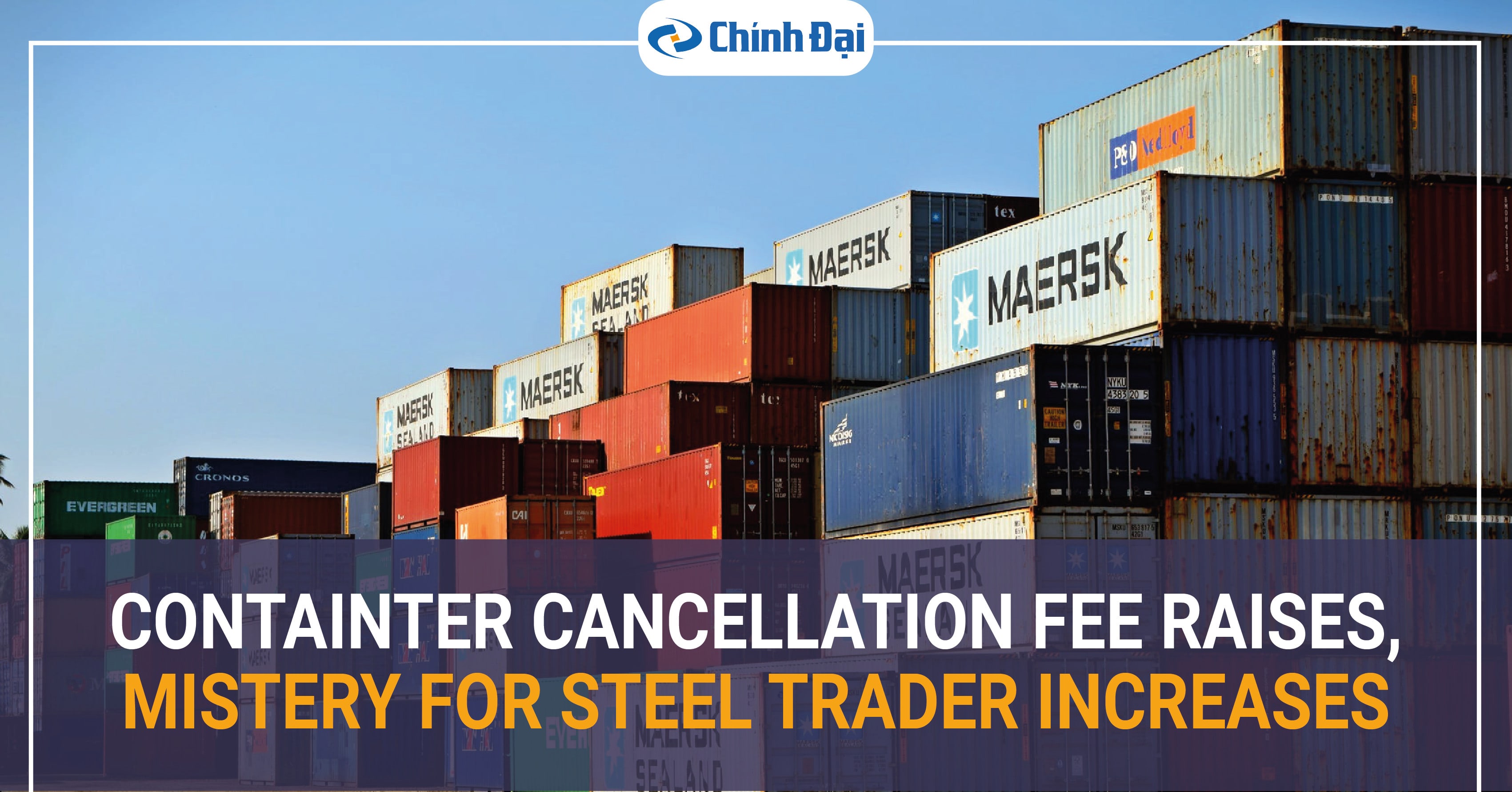
Over the past week, an acute shortage of containers and new rule changes by container lines have combined to again raise containerized shipping costs for commodity market participants, including steel traders.
1. Shipping lines companies gain large profit increases
Recently, container lines have not only continued to raise freight rates but have also introduced additional measures that will serve to increase difficulty for companies involved in shipping commodities in boxes, including steel traders.
In contrast, major shipping lines such as CMA-CGM and Maersk have reported large increases in profits for the third quarter of 2020, amid high demand, strong freight rates and low fuel costs.
2. Measures that again raised container lines shipping and container cancellation fees
First of all, the recently added rule is to reduce the amount of ‘free days’ set aside for importers to clear their cargo upon arrival at a port, without incurring demurrage or detention fees.
For example, free days for scrap metal traveling from Long Beach, California on the US West Coast to the Taiwanese port of Kaohsiung, now range seven to 19 days depending on the container line and shipment date, instead of 21 days. In Japan, a scrapyard source claimed that some routes from Japan into Asian ports have been allocated as little as five free days. It is to speed up turnaround times to deploy containers on more lucrative routes for consumer goods from Asia to the US or Europe. Also, the shipping line desires the repatriation of empty containers more than taking a fee for shipments of scrap metal.
According to the Shanghai-US West Coast sub-index of the Shanghai Containerized Freight Index; the fee rose by $68 per tonne this week to $3,947 per twenty-foot equivalent unit (TEU).
3. Containers pile up in the UK, Australia
Amid a severe build-up of containers following a surge in imports from Asia, Felixstowe port in southeastern England continues to be a flashpoint in the shipping world. The estimated import volumes of this port is up by 30% compared with the normal average at this time of year.
The lack of available hauliers, which is caused by the UK’s stringent restriction due to Covid-19, has led to a more severe problem. The empty containers are all over the port, which prevents new cargoes from entering. A steel scrap exporter source estimates that there might be 40,000 containers stuck at Felixstowe, the biggest container port in the UK.
Meanwhile in Australia, the industrial conflict also led to a glut of containers at port-side terminals since September. There is no resolve issued ahead of Christmas, according to media reports.
4. Container cancellation fees jacked up
There is a contrary in the cancellation fee between container lines and trading companies. It is in a very short period of notice that the trading company knows if they are able to actually get their hands on containers. However, if the trading company cannot turn the containers around in time for shipment and pitifully have to cancel their sailing, they will be now charged $300 instead of $100 per container (applied for UK-India route).
Many traders have to let go of business due to this raise.
5. More outstanding contracts are canceled
According to Fastmarkets, several outstanding scrap container shipment contracts had been canceled by lines, and the trend has only accelerated ever since with lines being unable to provide containers to carry out outstanding deals.
A scrap exporter said that “Shipping lines… will only ship at increased prices [when containers are available], but have not yet revealed how much they will charge”. He also added that there will be another rise of several hundred US dollars per TEU later this month.
Source: Fastmarkets
